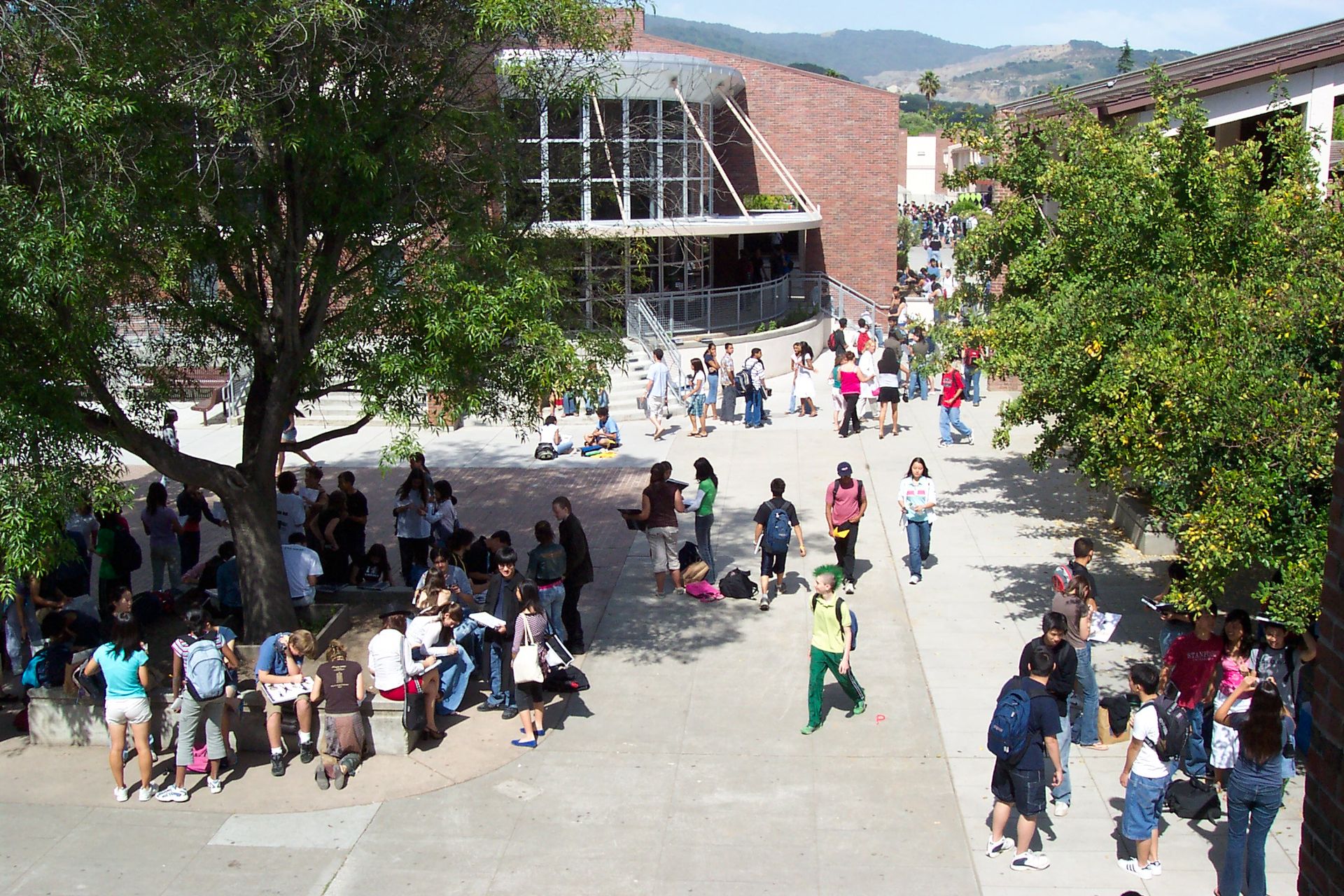![At Cupertino’s Monta Vista High School, pictured here in 2006, students roam through the academic court and library during school hours. [Monte Vista High School]](http://www.jstudentboard.com/reporter/wp-content/uploads/2015/09/29.MVHS_-300x200.jpg)
Many students in the Bay Area attend outdoor campus schools and have little experience of being in indoor campuses. In interviews with JSR, students from Monta Vista High School, an outdoor campus school in Cupertino, speculated about what indoor campus schools might be like.
“It might be more convenient for [students attending] indoor schools because they don’t have to really dress according to the weather. But I think fresh outdoor air is helpful too. Like, a sunny day would put me in a better mood,” said junior Anes Kim.
Kim also said that she’s glad she is at an outdoor campus school because she thinks being in an indoor school would be repetitive without the pleasant outdoor experience.
Another student, junior Jessica Lee, concurred.
“I prefer outdoor schools because there is always fresh air and sunlight; and because I walk farther distances, I get daily exercise,” Lee told JSR. “But [indoor schools] remind me of movies like ‘High School Musical’ with hallways aligned with lockers.”
JSR also interviewed Aaron Sun, a student at an indoor school in San Jose called BASIS Independent Silicon Valley, who validated Lee’s opinion.
“People think indoor schools are really fancy and convenient, but it seems almost mundane and repetitive every day. I don’t get as much fresh air or exercise as I would like,” Sun told JSR.
Indeed, data from a recent Washington University of St. Louis study suggests that schools should create opportunities for children to get exercise, whether their campuses are structured to be outdoors or indoors. The study showed that urban public school children obtain more exercise when given the opportunity to play outside during recess hours, rather than staying indoors.
The study included 106 elementary school students ranging from grades two to five, and researchers concluded that children who played outdoors took 1281 steps during the school day and achieved a higher heart rate than those who played indoors and only took about 378 steps.

